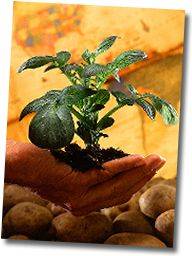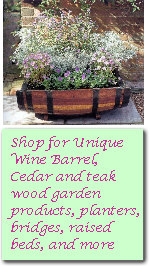A common mistake in home landscaping is planting trees and
shrubs that eventually grow too large for the location. Many evergreens are
lovely when small but they dwarf small yards and hide architectural features of
homes as they mature. Often severe and restrictive pruning is used in an attempt
to keep plants in bounds. This usually leaves a rather artificial looking
specimen instead of a plant that blends with the rest of the landscape.
One way to keep all landscape elements in proportion and
include evergreens is to select among the dwarf conifers that are available in
today's nursery trade. A dwarf conifer never attains the stature that is normal
for the original plant from which it was derived.
Dwarf plants occur in several ways. Chance seedling variations
and bud sports (mutations) can stunt plants or branches. Nurserymen watch for
and propagate these variations in an attempt to preserve the dwarf
characteristics. Dwarfing is also accomplished by asexually propagating branches
exhibiting juvenile characteristics. Species naturally low in habit, such as
creeping junipers, are usually included in the dwarf conifer group for
landscaping purposes.
Dwarf conifers often grow no more than a few inches and
occasionally not more than a quarter inch per year. This is because dwarfing
characteristics alter the plants' growth rate. But keep in mind that dwarf is a
relative term and does not necessarily mean miniature. For example, a dwarf
spruce will be shorter than its standard relatives but may mature at over 20
feet.
In some dwarf conifers, the needles are stunted in addition to
the growth of the stem, adding yet another dimension to their charm and
character. The slow growth rate of dwarf conifers offers the distinct and
practical advantage that very little, if any, pruning is required. However,
plants must be observed for reverted branches (branches that return to their
natural habit) where vigorous growth could eventually eliminate the desired
form. Such branches must be removed from the plants whenever they appear.
Dwarf conifers generally prefer a sunny but somewhat protected
location and slightly acidic soil that is well drained. Gardeners should avoid
setting the plants in highly fertile soil as this condition tends to stimulate
growth. Plants with good color and those with satisfactory annual growth
generally do not need fertilization. A surface application of organic matter,
such as shredded bark or leaf mold, will usually provide an adequate source of
nutrients.
The best time to transplant dwarf conifers is between October
to March, anytime the ground is not frozen but the plants are in a semi-dormant
to dormant condition. Dwarf conifers, like most of their larger relatives,
require a rootball when transplanted. Gardeners should note that dwarf conifers
tend to be expensive because they are difficult to propagate and uncommon
![]() Gardeners' Corner
Kids'
Garden
Sustainable Garden
Contact Us
Gardeners' Corner
Kids'
Garden
Sustainable Garden
Contact Us![]()

